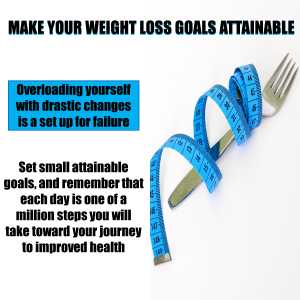When it comes to innovative weight loss strategies, alternate day fasting (ADF) stands out as a powerful and flexible method. This approach alternates between fasting days and eating days, helping you achieve weight loss and improved health without overly restrictive dieting. Let’s explore the science, benefits, challenges, and practical tips to successfully incorporate ADF into your lifestyle.
What Is Alternate Day Fasting?
Understanding the Concept
Alternate day fasting is an intermittent fasting approach where every other day is a fasting day with little to no calorie intake and an eating day where you can eat normally. On restricted days, calorie intake is usually limited to 500–600 calories, but in some variations, food is completely abstained from.
How It Works (And How It’s Different From Other Types Of Fasting)
Most notably, in contrast to widely cited fasting strategies such as the 16/8 method that split eating and fasting periods on any given day, the ADF approach covers whole days. That extended period of fasting kicks fat-burning into higher-gear, producing not only fat loss but also metabolic benefits, and makes it one of the most effective styles of intermittent fasting. It’s especially attractive to people who want to avoid daily fasting.
Health Benefits of Alternate Day Fasting
Supports Weight Loss
ADF has been shown to promote significant weight loss due to decreased energy consumption and increased fat metabolism. On fasting days, the body burns glycogen stores for energy, eventually switching to burning stored fat once glycogen is used up. This is a method that evidence shows helps individuals shrink fat mass, whilst preserving muscle mass.
Improves Metabolism
Regular fasting days enhance insulin sensitivity, so the body can process sugar better. Low insulin levels promote fat burning for energy, inhibit fat storage, and are associated with a lower risk of type 2 diabetes.
Reduces Inflammation
ADF decreases inflammation markers, thereby lowering the risk of chronic diseases like heart disease, arthritis, and Alzheimer’s. The reason for this anti-inflammatory effect is thought to lie in the enhanced cellular repair mechanisms that activate during a fast.
Promotes Longevity
But an exciting fringe benefit of ADF is that it seems to extend lifespan. Fasting encourages autophagy, a process that clears damaged cells and encourages the generation of new ones. This cellular renewal safeguards against age-related diseases and enhances overall vitality.
Enhances Brain Health
Fasting boosts the production of a protein called brain-derived neurotrophic factor (BDNF), which plays a role in brain health. Having higher levels of BDNF is linked to better memory, concentration and defense from neurodegenerative diseases.

How to Begin Alternate Day Fasting
Preparing Your Mind and Body 

It takes a mental and physical preparation to launch ADF. Start off by increasing the hours of fasting slowly to allow your body to adjust. Having specific goals in mind, like shedding some pounds or increasing energy levels, can help keep you focused and motivated.
Making a Plan for Your Alternate Day Fasting Days and Eating Days
For example, depending on your availability, you might choose to fast every Monday, Wednesday, and Friday. Incorporate eating days for balanced, nutrient-dense meals to energize your body post-workout.
What to Eat on Eating Days
To get the most out of ADF, choose nutrient-dense, nonprocessed foods. Include lean proteins, healthy fats, fibrous vegetables, and complex carbs. Stay away from sugar-laden or ultra-processed foods that would undermine your efforts.
Staying Hydrated
Hydration is key both on fasting and eating days. It helps regulate your body’s functions, curbs hunger and prevents dehydration. If you want to make your fast a little more interesting, herbal teas and black coffee are great options.
Challenges & How to Deal With Them
Managing Hunger
On an ADF, hunger is a natural behaviour that a lot of people experience on fasting days, particularly when they are new to the process. Keep busy with activities to take your mind off cravings. Drinking water, herbal teas, or small amounts of low-calorie broth can also help.
Handling Fatigue
Fatigue can also happen while your body is adjusting to fasting. Sleep enough, and add mild exercise like yoga or a walk to energize.
Staying Motivated
Consider the health and weight loss benefits of ADF in the long term. Progress tracking tools, like journals or fitness apps, can go a long way toward keeping you motivated and helping you see results.
Success Tips for Alternate Day Fasting
Set Realistic Goals
Begin with something sustainable, such as once a week fasting, and then augment as you adjust. Setting the bar too high can lead to aggravation, so take a slow approach.
Alternate Day Fasting: Track Your Progress
By monitoring your weight, body measurements, energy levels, you can find out if there are improvements and this will further help you to get back to the commitment. You learn to celebrate small successes along the way.
See a medical professional.
Get a doctor or dietitian’s opinion about ADF before undertaking it, particularly if you have underlying health conditions or concerns. The experts help you fasting according to your health.
Listen to Your Body
Listen to what your body is telling you. If fasting seems too much or has a very negative impact, you can adjust your goal and set shorter times in fasting.
Alternate Day Fasting With Exercise
Best Workouts to Combine With Fasting
Exercise lightly on fasting days with ADF, such as walking, swimming or yoga. On your eating days, perform strength training or moderate-intensity cardio, as this will help to maintain your muscle and encourage fat loss.
Alternate Day Fasting: How to Avoid Overexertion
Skip the high-intensity workouts on fasting days to avoid fatigue or soreness. Focus on recovery and rest to help your body adapt.
Benefits of Combining Fasting and Exercise
Exercising during ADF enhances fat burning and boosts endorphins, improving mood and energy levels. The combination is particularly effective for achieving a leaner physique.
3 Common Misconceptions About Alternate Day Fasting
It’s Just a Fad
Despite how trendy fasting might seem, its origins go back centuries. Scientific evidence backs its effectiveness for weight loss, metabolic health and longevity.
It Leads to Muscle Loss
When accompanied by proper nutrition and resistance training, ADF does not lead to substantial muscle loss. Eating nutrient-dense meals can help preserve muscle on eating days.
It’s Too Hard to Maintain
ADF might not be the easiest to stick to, especially starting off, but it does get more manageable. Several people consider the flexibility of eating days makes it less difficult to stick to than calorie-restricted diets every other day.
The Other Benefits of Alternate Day Fasting Beyond Weight Loss
Hormonal Balance
Hormones such as insulin and human growth hormone (HGH) are regulated by ADF — which has been shown to enhance metabolism and stimulate the repair of muscle and fat burning.
Reduced Cravings
WHAT IS FASTING: Fasting is like a training for your body to get used to a much longer period of time that your body can go without food, such that you can go on skipping snacking and sugary delights. This is helpful over time for stabilizing appetite, and it encourages mindful eating.
Enhanced Gut Health
Fast the digestive system brings a rest, promotes the health of intestinal bacteria passed several channels reduce the bloated stomach.
Better Sleep Patterns
The circadian rhythm can be regulated through ADF, which leads to better sleep quality and longer duration. Most people when using this method are feeling more refreshed and more energetic wake up with this method.
Eat Stop Eat With Anabolic Fasting Testimonials


How to Personalize Your Alternate Day Fasting
Adjusting Fasting Duration
Some individuals may benefit from modified fasting, such as shorter fasting windows or increased calorie intake on fasting days. Tailor the plan to fit your energy needs and lifestyle.
Incorporating Social Events
To maintain flexibility, plan fasting days around social commitments to avoid feeling excluded. Shift your schedule as needed without guilt.
Experimenting With Foods
Explore different foods on eating days to identify what sustains energy and satiety. A variety of nutrient-rich meals enhances adherence to the plan.
Conclusion: Alternate Day Fasting
Alternate day fasting is a transformative strategy for weight loss, metabolic health, and longevity. By alternating between fasting and eating days, you can tap into your body’s natural fat-burning processes, improve energy levels, and enjoy long-term health benefits. While challenges exist, a personalized approach and proper preparation can make ADF a sustainable and rewarding lifestyle change. Start your journey today, and unlock the incredible potential of alternate day fasting.
H2 FAQs About Alternate Day Fasting
How long does it take to see results with ADF?
Most people notice weight loss and improved energy within two to four weeks.
Can I drink beverages like tea or coffee during fasting?
Yes, unsweetened tea, black coffee, and water are acceptable and help curb hunger.
Is ADF suitable for everyone?
While generally safe, ADF isn’t recommended for pregnant women, children, or individuals with certain medical conditions. Consult a healthcare provider first.
What should I do if I feel weak while fasting?
Stay hydrated, rest, and consider breaking your fast with a small, nutrient-dense snack if necessary.
Can I modify ADF to fit my lifestyle?
Yes, ADF is flexible. Adjust fasting durations and schedules to suit your energy needs and commitments.






